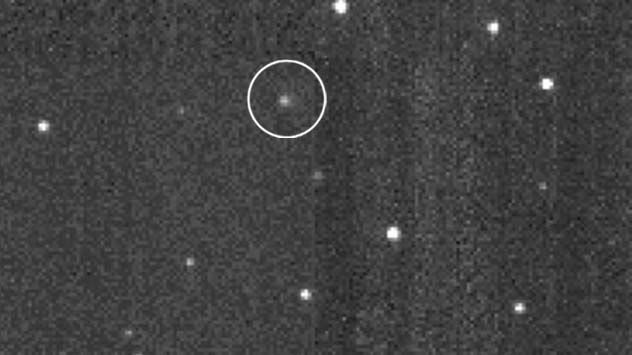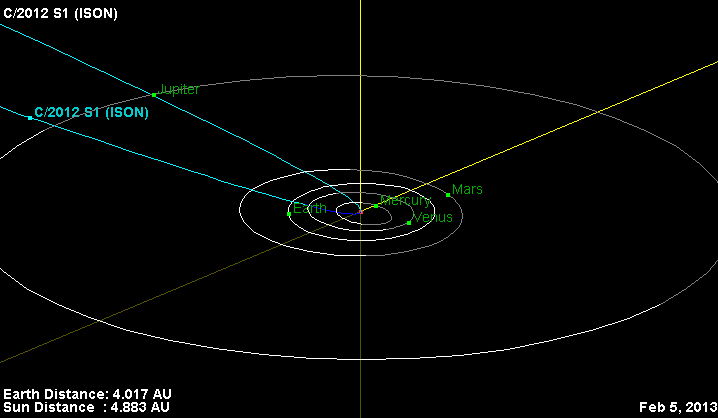Promising Comet ISON Stars in Webcast Tonight: How to Watch Live

The potentially spectacular Comet ISON is barreling toward the inner solar system, but you don't have to wait until November, when it is closest to the sun, to try to spot the icy wanderer. A live webcast tonight takes aim at Comet ISON as a preview to its main event later this year.
The online Slooh Space Camera will host the free live webcast of Comet ISON tonight at 7 p.m. EDT (2300 GMT) using the company's remotely operated observatory in the Canary Islands, off the west coast of Africa. You can watch the comet webcast live on SPACE.com here.
"Comet ISON is now headed directly toward the sun, which it will graze at the end of November," Bob Berman, an astronomer with Astronomy Magazine who will participate in the 30-minute Slooh webcast, told SPACE.com. "That month, it should attain naked-eye brightness, and very probably become magnificently brilliant for a few weeks after Thanksgiving. This possibly-historic visit cannot be ignored, and Slooh is dedicating one night a month between now and then to watch it live, firsthand, as it approaches. This is one celestial interloper that will not sneak up on us."
In fact, Comet ISON may be one of the most-watched comets in years. NASA is organizing a global observing campaign to track the comet with ground-based telescopes and spacecraft across the solar system. [See photos of Comet ISON]
Some astronomers have said ISON could become the "Comet of the Century," when it makes its closest approach to the sun on Nov. 28. But that depends on how the comet holds together as it nears the sun, NASA scientist Don Yeomans, chief of the agency's Near-Earth Object Office at the Jet Propulsion Laboratory in Pasadena, Calif., has said. The comet could put on a dazzling display, or it could fizzle out entirely, he added.
Tuesday's Comet ISON webcast will be presented by Berman and Slooh observatory engineer Paul Cox. You can also follow the webcast directly at the Slooh Space Camera website.
So far, Comet ISON is not brightening as much as scientists had expected. The comet was first discovered in September 2012 by Russian amateur astronomers Vitali Nevski and Artyom Novichonok using the International Scientific Optical Network. The comet's official name is C/2012 S1 (ISON).
Breaking space news, the latest updates on rocket launches, skywatching events and more!
On Nov. 28, Comet ISON will fly within 800,000 miles (1.2 million kilometers) of the sun's surface — an extremely close shave — making ISON a sungrazer comet.
Editor's note: If you have an amazing picture of Comet ISON or any other night sky view that you'd like to share for a possible story or image gallery, send photos, comments and your name and location to managing editor Tariq Malik at spacephotos@space.com.
Email Tariq Malik at tmalik@space.com or follow him @tariqjmalik and Google+. Follow us @Spacedotcom, Facebook and Google+. Original article on SPACE.com.

Tariq is the award-winning Editor-in-Chief of Space.com and joined the team in 2001. He covers human spaceflight, as well as skywatching and entertainment. He became Space.com's Editor-in-Chief in 2019. Before joining Space.com, Tariq was a staff reporter for The Los Angeles Times covering education and city beats in La Habra, Fullerton and Huntington Beach. He's a recipient of the 2022 Harry Kolcum Award for excellence in space reporting and the 2025 Space Pioneer Award from the National Space Society. He is an Eagle Scout and Space Camp alum with journalism degrees from the USC and NYU. You can find Tariq at Space.com and as the co-host to the This Week In Space podcast on the TWiT network. To see his latest project, you can follow Tariq on Twitter @tariqjmalik.

